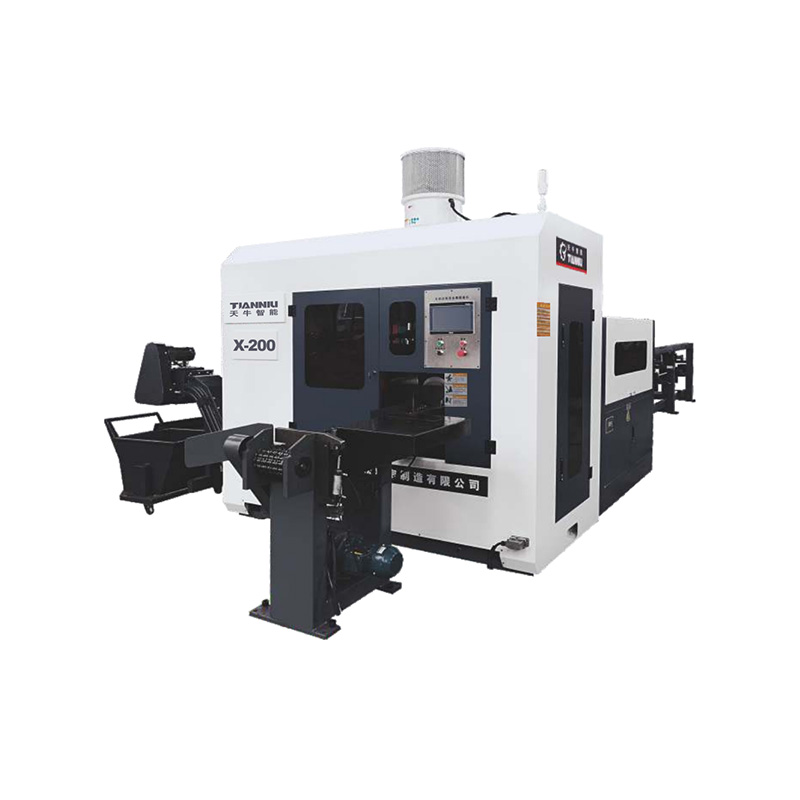Email: hujin@chinahujin.cn
Key Functional Differences Between Horizontal Band Saw Machine and a Vertical Band Saw
Orientation and Material Handling
One of the obvious differences between a horizontal band saw machine and a vertical band saw lies in the orientation of the blade and the way materials are handled. In a horizontal model, the blade moves downward into a stationary workpiece, making it ideal for cutting heavy or long metal bars and pipes with ease. In contrast, a vertical band saw features a vertically mounted blade and typically requires the operator to manually guide the material through the blade. This makes the vertical type more suitable for intricate or contour cuts, where the maneuverability of the workpiece is important. The horizontal version excels in automated, straight cuts on large stock, while the vertical counterpart offers greater flexibility for custom shapes and curves.

Cutting Applications and Use Cases
Horizontal band saws are predominantly used in metal fabrication industries for straight cuts, particularly when dealing with large-volume production or heavy-duty materials. Their design supports consistent, precise cuts over repeated cycles, which is essential for manufacturing environments. On the other hand, vertical band saws are more commonly found in workshops or tool rooms where the operator needs to make more complex cuts or prototypes. Their vertical configuration allows for greater control during freehand cutting, and they can handle a wide range of materials, including metal, plastic, and wood, making them more versatile for detailed work but less efficient for bulk production.
Automation and Efficiency
Another major difference between the two types of band saws is their degree of automation. Many horizontal models come with hydraulic systems for automated feeding, clamping, and blade control, making them highly efficient for repetitive tasks. These features reduce manual intervention and speed up the cutting process, especially for large production runs. Vertical machines, however, are generally more manual. While some vertical models offer semi-automatic features, the operator still plays a larger role in guiding and controlling the cut. This means that vertical saws are slower in terms of throughput but better suited to jobs requiring manual precision and customization.
Space Requirements and Installation
Horizontal band saw machines tend to have a more robust and elongated structure, often requiring more floor space and a dedicated setup area within a workshop or factory. This larger footprint is a consideration for facilities with limited space. Vertical band saws, in comparison, usually have a more compact design and can be placed against a wall or in tighter spaces, offering more flexibility in terms of installation. However, their open-frame design means additional care must be taken to ensure safe operation, especially when handling large or awkwardly shaped materials.
Blade Movement and Cutting Styles
The movement of the blade during operation also sets these machines apart. In a horizontal system, the blade typically moves in a linear path down into the material, maintaining constant contact and ensuring a smooth, clean cut. This is ideal for cutting through solid metals and alloys. In contrast, the vertical band saw allows the blade to remain stationary while the material is manually fed through it. This arrangement enables the operator to change the direction of the cut at will, making it suitable for internal cutouts and irregular shapes. The versatility of the vertical style comes at the cost of reduced automation and slower operation speed compared to the horizontal system.
Conclusion
While both types of band saws share a common cutting principle, the horizontal and vertical designs serve very different industrial needs. The horizontal band saw machine is optimized for automated, straight-line cutting of heavy and large-volume materials, making it a mainstay in production-focused environments. Meanwhile, the vertical band saw offers flexibility for custom and detailed work, albeit with more manual effort and slower processing times. Understanding these key differences helps operators and facility managers choose the suitable equipment based on the nature and volume of their cutting tasks.
 English
English русский
русский عربى
عربى






